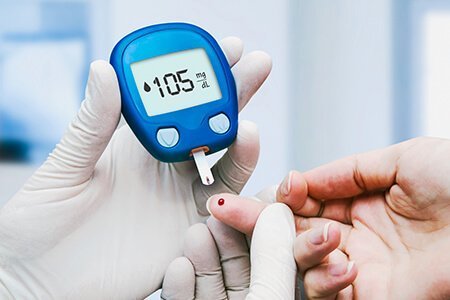Diabetes is a chronic condition that affects how your body processes blood sugar (glucose). It is a growing health concern globally, with millions of people diagnosed every year. Left unmanaged, diabetes can lead to serious complications, including heart disease, kidney failure, and nerve damage. In this blog, we’ll explore what diabetes is, how it is diagnosed, and the current approaches to managing it.
What is Diabetes?
Diabetes is a disease in which the body either cannot produce enough insulin or cannot effectively use the insulin it produces. Insulin is a hormone produced by the pancreas that allows your cells to take in glucose from the bloodstream, providing energy for your body. When this process is disrupted, blood sugar levels rise, leading to hyperglycemia, or high blood sugar.
There are three main types of diabetes:
- Type 1 Diabetes: This is an autoimmune condition where the body’s immune system attacks and destroys insulin-producing cells in the pancreas. People with Type 1 diabetes need to take insulin for the rest of their lives.
- Type 2 Diabetes: This is the most common form of diabetes. It occurs when the body becomes resistant to insulin or the pancreas doesn’t produce enough insulin. Risk factors for Type 2 diabetes include obesity, a sedentary lifestyle, poor diet, and family history.
- Gestational Diabetes: This type occurs during pregnancy when the body cannot produce enough insulin to meet the increased needs. While it often disappears after pregnancy, it increases the risk of developing Type 2 diabetes later in life.
Symptoms of Diabetes
The symptoms of diabetes can vary based on the type and the severity of the condition. Some common symptoms include:
Frequent urination
Excessive thirst and hunger
Unexplained weight loss
Fatigue
Blurry vision
Slow-healing sores or frequent infections
Tingling or numbness in hands or feet (particularly in Type 2 diabetes)
If you experience any of these symptoms, it’s important to seek medical advice for proper diagnosis and management.
Diagnosis of Diabetes
Diabetes is typically diagnosed through a series of blood tests that measure the level of glucose in your blood. Common tests include:
- Fasting Blood Sugar (FBS): A test that measures blood glucose after fasting for at least 8 hours. A reading of 126 mg/dL or higher on two separate tests confirms diabetes.
- Oral Glucose Tolerance Test (OGTT): In this test, your blood sugar levels are measured after fasting and then two hours after drinking a sugary solution. A result of 200 mg/dL or higher indicates diabetes.
- Hemoglobin A1c Test: This test provides an average of your blood glucose levels over the past 2-3 months. A level of 6.5% or higher indicates diabetes.
- Random Blood Sugar Test: This test is done at any time of day and can diagnose diabetes if your blood sugar is 200 mg/dL or higher, along with symptoms of diabetes.
It’s important to remember that early diagnosis is crucial to prevent complications and start effective management.
Management of Diabetes
Managing diabetes involves a combination of lifestyle changes, medication, and regular monitoring to keep blood sugar levels within a target range. While there is no cure for diabetes, proper management can help control the condition and allow individuals to live healthy, active lives.
- Lifestyle Modifications
Dietary Changes: A healthy, balanced diet is essential in managing diabetes. Focus on whole grains, vegetables, lean proteins, and healthy fats. Limit processed foods, sugary snacks, and refined carbohydrates that can cause blood sugar spikes. A registered dietitian can help develop a personalized eating plan.
Exercise: Regular physical activity helps regulate blood sugar levels by increasing insulin…
